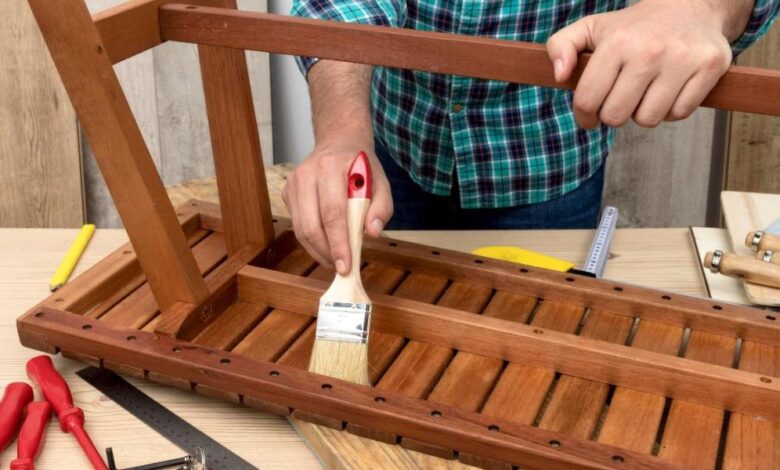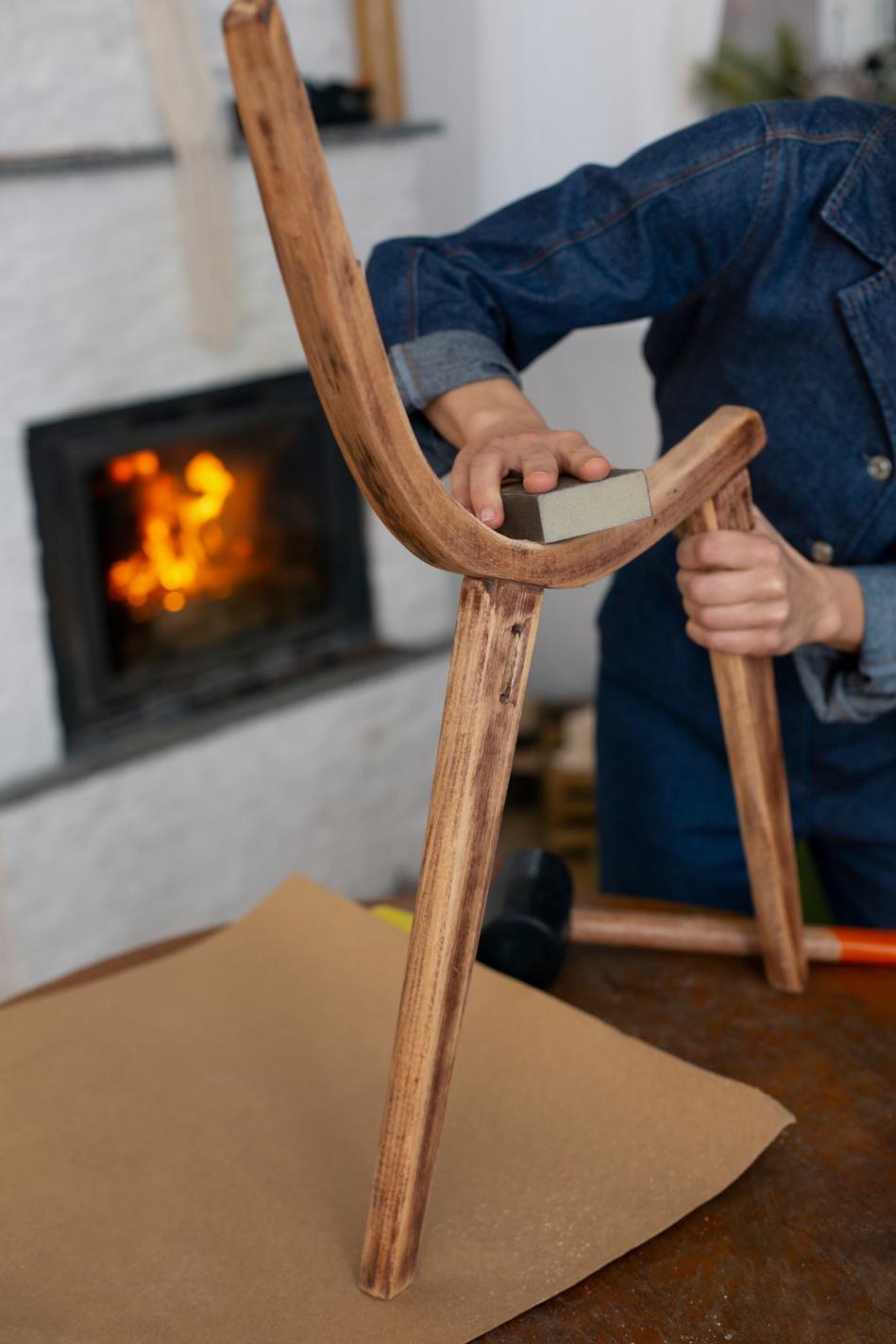How Amish Craftsmanship Elevates Solid Wood Furniture Quality

A combination of tradition, accuracy, craftsmanship, and longevity may be found while exploring the beauty of custom Amish furniture. This article examines how Amish woodworking techniques enhance the durability and quality of solid wood furniture, ranging from Amish outdoor furniture to Amish bedroom furniture, using Snyder’s Furniture as a point of reference.
Amish handcrafted furniture, including tables, outdoor chairs, and beds made of handmade wood, is constructed using traditional techniques:
- Hardwood Selection: Because of their strength and consistent grain, artisans frequently select solid woods like oak, cherry, maple, walnut, and hickory.
- Joinery Techniques: Dovetail and mortise-and-tenon construction are common joinery methods that offer strength without the need for screws or nails.
- Natural Finishing: Finishes like hand-applied oils and stains help maintain the visual character and texture of the wood.
These methods demonstrate a dedication to traditional, long-lasting workmanship.
Amish woodworkers create mission-style furniture in several distinct styles that reflect different design values:
| Style | Features | Common Woods |
| Mission | Clean lines, visible joints, solid structure | Quartersawn oak |
| Shaker | Simplicity, utility, subtle form | Maple, cherry |
| Transitional/Modern | Updated forms with craftsman detailing | Oak, cherry, maple |
These styles accommodate classic and modern interior preferences, showcasing the versatility of Amish design principles.
Typically, custom furniture is made entirely of solid wood rather than veneers or composites. Craftspeople make sure every piece is sturdy and stable by hand-picking materials based on thickness and texture. These pieces are a sustainable substitute for mass-produced furniture because they last for generations when properly maintained.
Shops like Snyder’s Furniture provide a range of personalization options that showcase the adaptability of Amish manufacturing, including:
- Wood selection (e.g., oak, cherry, maple, walnut)
- Variety of finishes and stains
- Optional dimensions and configurations for bedrooms, dining areas, cabinets, and outdoor spaces
This customization preserves the quality of Amish tradition while enabling customers to obtain pieces that meet particular home design requirements.
Amish craftsman furniture employs methods that enhance both appearance and structure:
- Joinery: Tongue-and-groove for panels, mortise-and-tenon for frames, and dovetail joints for drawers.
- Handwork: Amish-valued tools are frequently used to plane or sand surfaces by hand.
- Natural finishes: Rather than hiding the wood grain, oils and low-sheen dyes bring it out.
These craft furniture methods produce long-lasting, aesthetically pleasing furniture that exhibits design integrity.
The emphasis on solid hardwoods, hand construction, and minimal waste results in longer product lifespans and less need for frequent delivery replacement, even though not all Amish furniture makers specifically promote their work as “green.” Depending on the creator, some workshops could also utilize wood that has been recovered or ethically obtained.
| Element | Description |
| Material | Solid hardwood (no MDF or particle board) |
| Joinery | Traditional, including dovetail and mortise-and-tenon |
| Styles | Mission, Shaker, transitional, and craftsman |
| Customization | Sizes, finishes, wood types, and layouts |
| Longevity | Built for decades with basic maintenance |
| Craftsmanship Origin | Produced by Amish families using generational woodworking methods |
| Environmental Impact | Long-lasting construction, minimal waste |
High-quality construction offers more than aesthetic appeal and taste. With Amish-made solid wood furniture:
- Durability: Pieces resist common issues like cracking or warping.
- Unique Character: Natural grain and hand finishing make every item one of a kind.
- Functionality: Traditional joinery methods create strong and stable structures.
- Design Integrity: Styles avoid excessive ornamentation or artificial materials.
The purposeful construction of handcrafted Amish objects makes them valuable in a time when rapid furniture and machine assembly are the norm. Every item is meticulously constructed rather than hurriedly put together on an assembly line, and this care is evident in:
- Fit and Finish: Joints fit tightly without filler, drawers glide smoothly, and edges are hand-sanded.
- Repairability: Solid handcrafted wood furniture can frequently be fixed, refinished, or altered rather than thrown away, in contrast to mass-produced goods.
- Emotional Value: You feel more connected to your home surroundings when you know who manufactured your furniture and how.
The material, the artistry, and the eventual owner are all respected by this methodical, patient procedure. It emphasizes a more deliberate, long-lasting approach to home furnishings and contrasts with throwaway consumer goods.

1. How can I tell whether a piece of furniture is authentically Amish?
Look for conventional joinery, such as mortise-and-tenon or dovetail, solid wood construction, and minimal use of veneers or contemporary hardware.
2. What distinguishes Shaker furniture from Mission furniture?
Mission has exposed woodwork and powerful, straight lines. Shaker places a strong emphasis on minimalism, simplicity, and usefulness.
3. Which wood, maple, cherry, or oak, is the best?
Maple has a clean, uniform grain, cherry darkens wonderfully with age, and oak is renowned for its strength.
4. Is it possible to modify Amish furniture?
Yes. You may order most Amish-built furniture in certain sizes, wood kinds, and finishes.
5. Is Amish furniture eco-friendly?
Although procedures differ, many items are constructed with minimum waste, which helps to lower the impact of landfills and furniture turnover.
Amish shop workmanship emphasizes sustainability, purpose, and accuracy while creating furniture. It provides heirloom-quality pieces that balance tradition and contemporary adaptability rather than mass-produced goods. One company that exemplifies these ideals is Snyder’s Furniture, which combines traditional methods with modern home design requirements.



